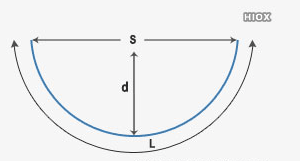tugni925
Mechanical
- Sep 14, 2020
- 107
Imagine a cable like this pinned at each end; I am looking at a table and it says the temporary elasticity modulus is about E_i = 35GPa, while the permanent is E_p = 50 GPa. Should this not be the other way around? I would imagine as the cable has just been installed and is extra stiff and gradually loses its stiffness as time goes on and there is more sag (d) in the cable? Not that it gains more stiffness as it hangs there. Perhaps I have misunderstood something here?


